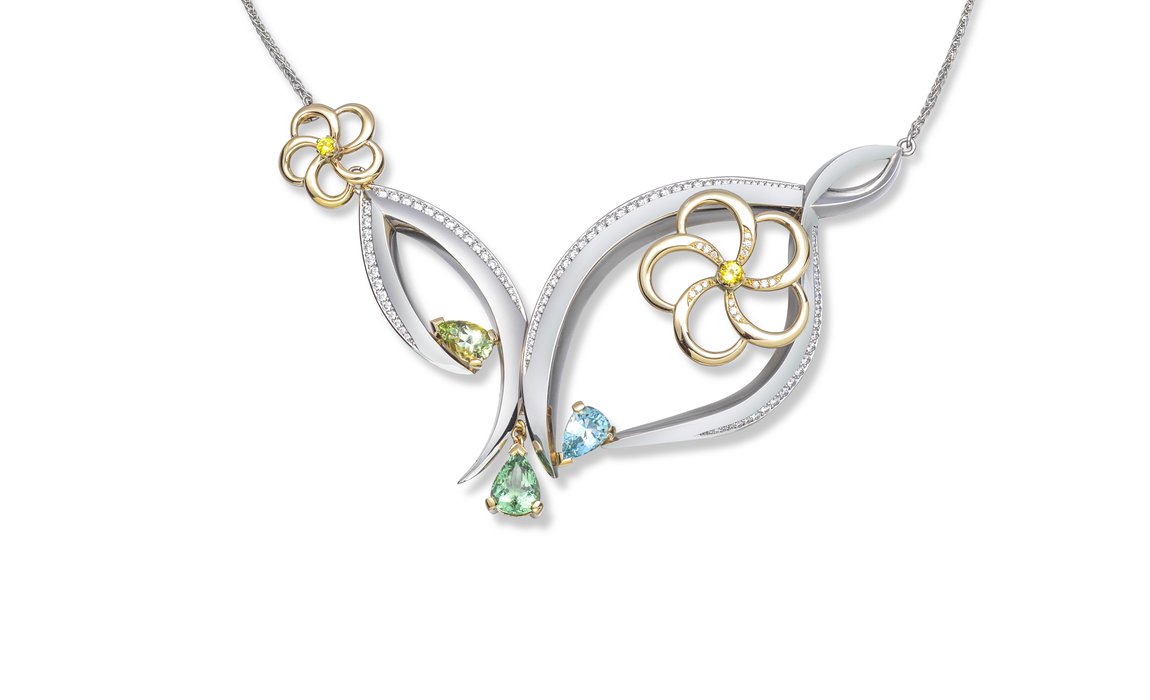Will Lander on craft and succession
When Will Lander looks back on how he came into the trade, he often begins with what he missed. Unlike many of his peers, he never did the Foundation Programme at the Goldsmiths’ Centre. “I was bound between the first and second year groups,” he says, “and somehow just slipped through.” What might have been a setback turned into an opening: a day-release apprenticeship, a sequence of competitions, and, above all, a deliberate decision to place himself in the orbit of people whose skills he admired.
“It opened my eyes,” he remembers of those early days in Clerkenwell. “Coming into London from Hertfordshire, suddenly you’re meeting people from all walks of life. You realise how much is out there, and that if you want to be comparable, you’ve got to stretch yourself.”
That instinct to stretch, to push himself not against others, but against his own potential, has shaped every move since. Today, Will is a senior diamond mounter at Jessica McCormack, responsible both for work at the bench and for training the company’s apprentice. The competitiveness that once drove him to enter WorldSkills UK now finds an outlet in teaching and mentoring. It is, as he frames it, a way of ensuring that others have the same chance he did, albeit by design rather than accident.
A deliberate detour
Will’s apprenticeship began at Harriet Kelsall in Hertfordshire, a workshop known for its bespoke design and training ethos. Being “bound between” year groups meant his technical education never followed the neat rhythm of his peers. Instead of treating that as a disadvantage, he decided to go back and learn what he had missed.
“I wanted to be comparable,” he says. “The only way was to learn a completely new skill set, which was the very traditional diamond mounting.” That decision led him, via the Centre’s network, to Hatton Garden. At a livery event hosted by the Goldsmiths’ Company, he was introduced to E. Wolfe. The next morning, he sent an email; a month later, he was sitting in an interview. “It was one of those moments where you realise: no one is going to do this for you. If you want it, you have to put yourself forward.”
 Will Lander (Harriet Kelsall Jewellery Design Ltd)
Will Lander (Harriet Kelsall Jewellery Design Ltd)
Pressure as a teacher
WorldSkills UK was his first test of that mindset. Competitions, he says, are less about the medal than the discipline. “You’re in an environment where you can’t ask anyone if it goes wrong. You just have to carry on. The confidence boost from getting through that is fantastic.” The Goldsmiths’ Craft & Design Council Awards brought a different challenge. Preparing a piece for public display forced him to scrutinise every edge and every surface, knowing it would sit under glass. “It pushes you to perfect your work for the cabinet, not just the bench,” he says. “It changes your habits.” For Will, competition was never about proving something to others. It was a way to force the standard higher, to match what he had glimpsed in others at the Centre.
Apprenticeship in practice

Now, as a senior diamond mounter at Jessica McCormack, Will finds himself on the other side of that equation. He is responsible not only for his own bench work but also for training the firm’s apprentice, and he does so with the full support of his managers.
“I’ve always believed in giving back,” he says. “I fell into this industry by complete chance, and I want other people to have that chance too.” Teaching the apprentice is not an add-on but integrated into his role: he can pass on techniques while working on live projects, and his colleagues see the value of investing time in it.
What is striking is how natural Will finds the shift.
“When you explain something to someone else, you have to slow down and break it apart. It makes you look at your own work differently. And the leadership here encourage it. They see it as part of the job, not a distraction.”
He has also begun teaching with the Jewellery Foundation Programme, the very scheme he once missed. The irony is not lost on him. “It’s fantastic to be able to contribute there now. It closes a loop, in a way.”
Building capacity in plain sight
The workshop at Jessica McCormack plays its own part in this circle of visibility. Clients are shown the space as part of the visit, and the reaction is often astonishment. “It blows people away,” Will says. “They don’t always realise it exists.” For him, this is more than a flourish for clients. It is a reminder that jewellery is not only about design and marketing, but about manufacture, and that if the manufacture disappears, so does the trade.
“Most people own jewellery, but they never think about who made it. They’ve heard of Formula One or Wimbledon trophies, but not the British workshops that produce them.”
That invisibility, he argues, is one reason the skills pipeline has thinned. “We have a skills shortage now, and it’s only going to get worse. Manufacturing has been outsourced, and companies here have closed. We need capacity for training, but we also need businesses on board to employ people. Otherwise, there’s nowhere for them to go.”
Giving back beyond apprentices
Not every business is able to take on an apprentice. Will is pragmatic about that. What matters, he says, is contribution in whatever form is possible. “You can make yourself more visible. You can open your workshop occasionally, teach a session, and show young people what a bench looks like. It doesn’t have to be a full apprenticeship contract to make a difference.” Part of the problem, he thinks, is cultural.
“It’s a very guarded, insular industry. People keep their heads down. But if we want to tackle the skills shortage, we have to support each other and make the craft more visible.”
For Will, visibility is not about marketing, it is about survival. The more people see that jewellery is made here, by hand, the more likely they are to consider it as a career.
Technology can help, if handled with care. “You have to contextualise it,” he says of CAD, 3D printing and even AI. “They’re tools that save time and allow us to push boundaries, not threats. The jobs most at risk from AI aren’t the craft-based ones. Fine motor skills can’t be automated.” Integrating those tools into training, he believes, is a way to attract younger entrants without diluting the essence of the craft.
Looking ahead
Will speaks often about chance, but his outlook is anything but accidental. He is aware that the people training today will be the business owners of the next generation. “Business owners now may not be here in fifteen or thirty years,” he says. “The younger generation will be running things. If we don’t attract talent now, the pipeline won’t exist.”
That long view informs his day-to-day work. Teaching an apprentice is not only about passing on techniques, but about embedding confidence, showing what the industry can look like when it invests in people. “When I was coming through, I wanted to be around people who were better than me, so I could learn. I want to be that for someone else.”
There is, too, a note of humility.
“I don’t take any of this for granted. I’m aware how much of my own path came from being in the right place at the right time. What matters now is making sure that others don’t have to rely on chance, that they can see a path and take it.”
It is a modest formulation, but it carries weight. The industry’s survival will not depend on any single initiative, but on many small acts of giving back, of visibility, of training. Will’s story is not one of grand gestures but of steady, deliberate choices. And in that sense, his competitiveness, the urge always to raise the bar, has become a collective ambition. He is not only measuring himself against the best, but measuring the trade against the future it could have.